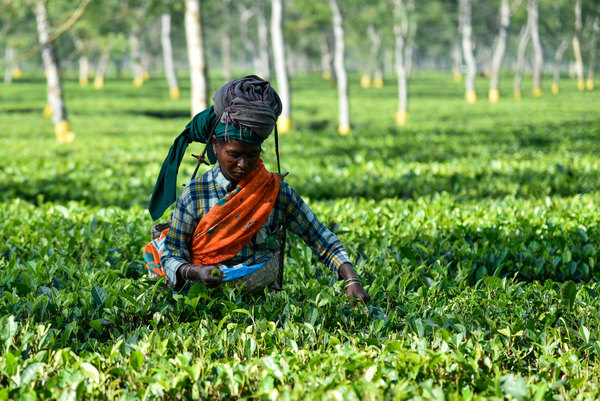Migrants fleeing conflict: a trial run for mass-migration due to climate change
Faced with an humanitarian crisis taking place on their shores, EU governments debate how to redistribute Syrian migrants fleeing conflict. In 2009, international health and travel medicine specialists at ECTMIH (Italy) identified mass migration as a key public health issue that Europe needed to prepare for because of climate change. What lessons can we learn from handling the current migrant crisis to prepare for the future warming of the planet?
Tropical secondary forests key to future health and wealth
Tropical rainforests are often referred to as the lungs of the planet for their crucial role in the global carbon cycle. They also harbour a large proportion of the world’s biodiversity and provide commodities for consumers around the globe. But the health of these forests is declining due to logging, climate change, invasive species, and…
Indonesia’s mangroves key to climate change mitigation, says study
Mangrove forests in Indonesia store approximately 3.14 billion tonnes of carbon, therefore protection of these ecosystems should be considered a major priority in terms of global climate change mitigation, according to a new study published in the journal Nature Climate Change.
Climate change: consider the worst case
With so many immediate crises to deal with, it would be easy for world leaders to put the issue of climate change on the back burner. As European leaders continue to battle with Greece’s financial crisis, terrorist attacks drive tourists from Tunisia, and conflicts continue to divide Syria and Iraq, then a climate summit to…
Invasive Mikania weed threatens people’s livelihoods and endangered iconic species
22 May 2015 is Biodiversity Day. Non-native invasive species like Mikania can detrimentally affect biodiversity – natural habitats and the people and animals that live in them. CABI’s Sean Murphy explains why. Mikania (Mikania micrantha) is a tropical vine which is native to the Americas. Often referred to as the ‘Mile-a-Minute Weed,’…
New report highlights link between forests, farms and food security
With the global population estimated to reach 9 billion by 2050, there has been much debate around the issues of nutrition and food security. Amid these concerns, a report published on May 6 by the International Union of Forest Research Organizations (IUFRO), calls for greater consideration of the use of forests as a food source as…
World Wildlife Day 2015
Last year saw the first World Wildlife Day, to be held annually on 3 March as the anniversary of the adoption of the Convention on International Trade in Endangered Species of Wild Fauna and Flora (CITES). (See this blog article by Stephanie Cole from a year ago). As is appropriate for a day commemorating CITES,…
Ebola – the not so new virus
Ebola, now largely confined to Sierra Leone, Liberia and Guinea claimed more than 9300 lives in West Africa in a year. I have selected key facts & insights from February’s national symposium “Ebola: The 21st century plague?" [Royal Society of Medicine, London, UK], held by international experts handling the epidemic. Covering the history of the disease, lessons learnt from 2014, and what strategies are in place for preventing future outbreaks, there was also an explanation finally as to why a rural outbreak became a regional urban epidemic, and an understanding of the complexity of medical volunteering and running ebola treatment centres.
New study produces biofuel and animal feed from the same crop
‘First generation’ bioethanol is produced directly from food crops such as corn and sugarcane. Global production of bioethanol has been increasing in recent years due to policies in many countries that consider biofuel as a renewable alternative to fossil fuels. While it is widely recognised as means to improve future energy security, the rapid expansion…
Using lasers to map forest carbon
Forests cover approximately 4 billion hectares of the Earth's surface, equivalent to a third of it's total land area. According to the WWF, between 12-15 million hectares of forests are lost every year due to human impacts, such as deforestation. It is estimated that forest loss is responsible for around 15% of global carbon emissions.…


